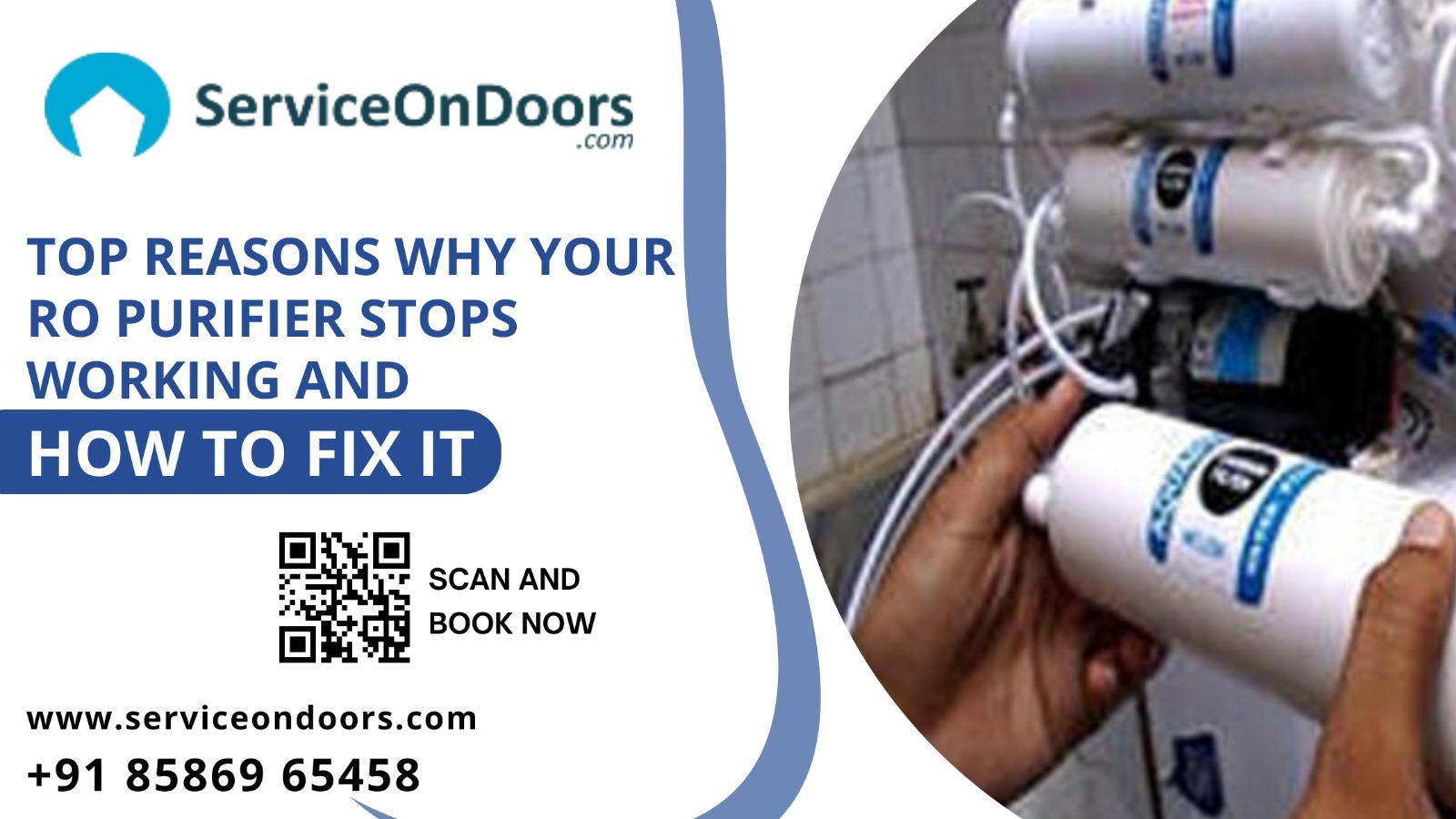Introduction
RO (Reverse Osmosis) water purifiers have become an essential household appliance for providing clean and safe drinking water. However, like any complex system, they can run into issues that prevent them from working correctly. Below are the top reasons why your RO purifier may stop functioning and how to troubleshoot and fix these problems effectively.
1. Low Water Pressure
One of the most common reasons an RO purifier stops working is inadequate water pressure. RO systems rely on high pressure to push water through the semi-permeable membrane that filters out contaminants. If the pressure is too low (typically below 40-60 psi), the system cannot produce enough filtered water.
How to Fix It:
- Check the feed water valve to ensure it's fully open, allowing proper water flow.
- Use a pressure booster pump if your water source lacks sufficient pressure.
- Inspect the pre-filter for clogs, as they can restrict water flow, lowering pressure.
2. Clogged Filters
An RO system has multiple filters (sediment filter, carbon filter, RO membrane) that work together to remove impurities. Over time, these filters can become clogged with debris, sediments, or minerals, reducing water output or stopping it entirely.
How to Fix It:
- Replace the filters as recommended by the manufacturer, usually every 6-12 months.
- Perform regular maintenance to prevent clogs and ensure the system operates efficiently.
3. Faulty RO Membrane
The RO membrane is the heart of the system, responsible for removing dissolved solids and contaminants. If the membrane becomes damaged or clogged with hard minerals like calcium and magnesium, it will fail to produce purified water.
How to Fix It:
- Inspect and replace the RO membrane every 2-3 years, depending on water quality and usage.
- Use a water softener to reduce hardness in water, which can prolong the life of the membrane.
4. Air Trapped in the System
Air can become trapped in the RO system’s pipes or filters during installation or after filter replacement, leading to irregular water flow or complete blockage.
How to Fix It:
- Open the system and let the air escape by carefully loosening the filter housing.
- Flush the system for 10-15 minutes after replacing any filters or the membrane to remove any trapped air.
5. Leaking Components
A leak in the RO system, whether from the faucet, pipes, or storage tank, can cause the system to malfunction. Leaks often lead to reduced water output and increased waste water production.
How to Fix It:
- Check all the connections and joints for any signs of leakage.
- Tighten or replace leaking parts as needed.
- Ensure that the O-rings in filter housings are properly sealed and undamaged.
6. Full Storage Tank
If your RO system has a storage tank, it can become full and trigger an automatic shut-off, preventing further water production. This is a common issue, especially when water usage is low, causing the tank to remain full for extended periods.
How to Fix It:
- Check the pressure in the storage tank. If it exceeds 7-8 psi, release some pressure using an air valve.
- Use up the stored water, especially if the system has been idle for a while, to allow fresh water to enter.
7. Drain Flow Restrictor Malfunction
The drain flow restrictor controls the amount of water flowing to the drain. If it malfunctions, either too much water will go to waste, or the system may stop producing water altogether.
How to Fix It:
- Inspect the drain flow restrictor for any blockages.
- Replace the restrictor if it's worn out or damaged to restore optimal water flow.
8. Electrical Issues
If your RO system is powered electrically, faults like loose wiring, blown fuses, or malfunctioning switches can prevent the system from working properly.
How to Fix It:
- Check the electrical connections to ensure everything is plugged in and functioning correctly.
- Inspect and replace any faulty fuses or switches that might be preventing the system from operating.
9. Malfunctioning Pump
In cases where water pressure is naturally low, many RO systems use an electric pump to boost pressure. A malfunctioning pump can lead to the system stopping altogether.
How to Fix It:
- Test the pump to ensure it's providing adequate pressure.
- Replace the pump if it fails to function or doesn't boost the water pressure sufficiently.
10. Excessive Waste Water
RO systems typically generate wastewater, but if the system is producing more waste than usual or no clean water at all, there might be an issue with the flow restrictor or a malfunction in the system’s balance between input and output water.
How to Fix It:
- Check the waste line for blockages or malfunctions.
- Replace the flow restrictor if it's faulty, as this component ensures that the waste-water-to-clean-water ratio stays balanced.
Contact Us:
If you need expert assistance, contact ServiceOnDoors for professional RO maintenance and repair services. You can call us at +91 85869 65458, visit serviceondoors.com, or scan the QR code to book a hassle-free service today. Keep your RO system running efficiently and ensure safe drinking water for your family!
